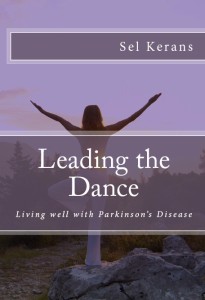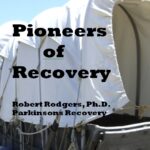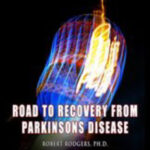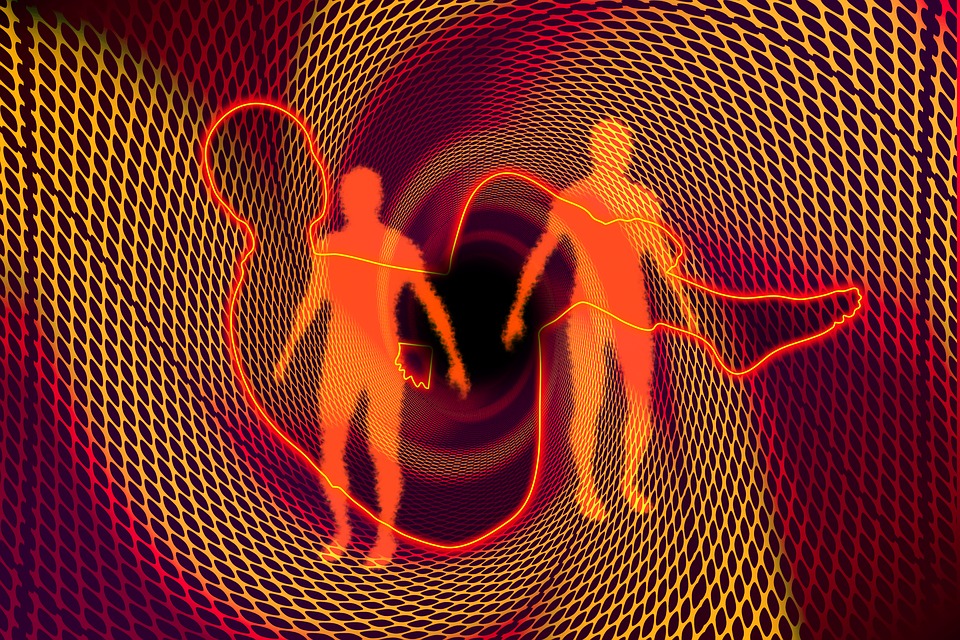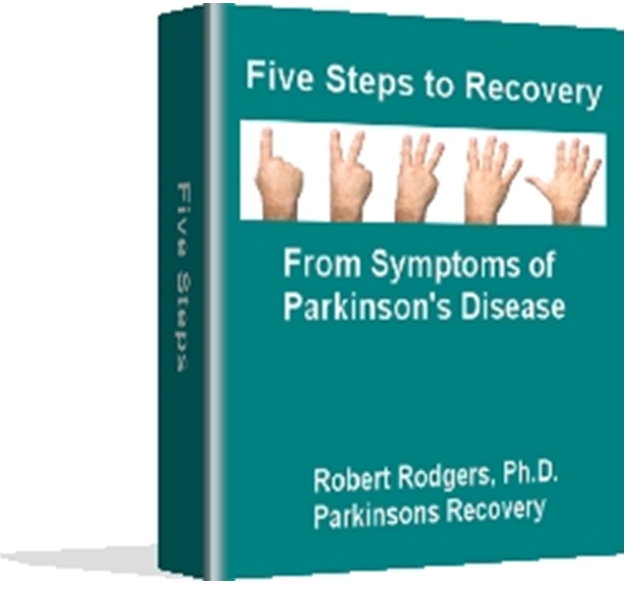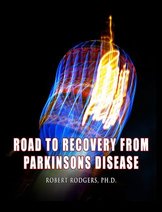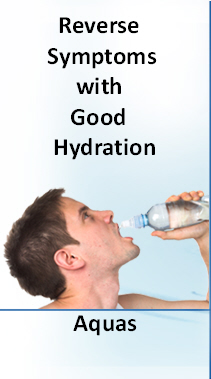Outside of John Coleman and Nathan Zakheim, have you interviewed or met anyone else who found a cure for Parkinson’s? Has anyone fully recovered (symptom free) from PD? If so, could you tell me who they are and what they did to recover.
Thanks.
Carl
As you state above, I have interviewed two people who declare they are “symptom free” after having advanced symptoms of Parkinson’s Disease. They are John Coleman, ND and Nathan Zakheim. I included interviews with both persons in Pioneers of Recovery.
I document many other stories of recovery here on the blog and on my radio program. Generally, most people report symptoms that fluctuate widely that involve symptom free periods and periods when symptoms flare (usually connected to stress).
I talk with many people who are feeling much better, but I do not have their permission to tell their stories or even add them to the count. The only stories I can report during the radio program interviews and the e mails are by people who give me permission to post them (with their first names only).
Thanks to your question, I have decided not to construct a “count” on the basis of symptoms as a function of whether they fully or partially resolved. I realize now that such a “count” would place the emphasis on the wrong side of the coin – on the goal of becoming symptom free.
What is the problem with this emphasis? You are most likely thinking, “Isn’t that the whole point of recovery?”
All successful recovery programs hinge on maintaining a healthy inventory of positive thoughts. The challenge for all of us is that our egos entangle us in a nightmare of negative thoughts throughout the day which trips us up and creates mobility difficulties. There are good reasons we choose to wait for a cure for Parkinson’s.
We get angry:
Why am I not feeling better today?
We get frustrated:
Why did a new symptom flare up today? I have suffered long enough.
We get impatient:
Why do I have nothing to show from my hard work?
We get fearful:
Why does my family believe I will get worse and worse. Is it true Parkinson’s is “progressive”?
We get depressed:
Why should I bother trying anything new? Nothing is working out.
We get mental:
Where is the evidence for recovery?
This is why we demand there be a cure for Parkinson’s now.
I could continue with 100 pages of questions inspired by our cleaver egos, but you get the point from the short list above. Our egos keep us stuck in the mud. It happens to all of us. No one in a body escapes.
Here is the rub. When our thoughts throughout the day are intent on eliminating symptoms or becoming “symptom free” we give energy to what we do not wish to manifest. If we agonize about becoming symptom free, any hope of recovery will inevitably backfire. We get the opposite of what we want. We give energy to what we do not want. If a majority of thoughts during the day focus on becoming symptom free, we nurture the symptoms, guaranteeing they will continue to pester us.
I admit this sounds counter intuitive, so let me explain. Focusing on becoming “symptom free” suspends you in a space of negative thinking that hangs out in collective consciousness. Every thought has a frequency. Those that center around “eliminating symptoms” are low frequency thoughts that can never manifest health and wellness. Rather, such thoughts sustain disease and illness. The thought
“I want to be symptom free”
focuses on what you do not want rather than what you do want to manifest.
A key to recovery is to take control over our thoughts moment to moment. As I wrote Five Steps to Recovery (which is all about transforming our thoughts), I monitored my own thoughts each day.
Geez. I could not believe what I discovered. I roll the same negative thoughts around my head every day. The number of new thoughts was unbelievably tiny when compared to the thousands of negative thoughts I recycled every day. It was if I was living the same day over and over as I listened to the same record of depressing songs.
Have you ever seen the movie Groundhog Day where Bill Murray re-lives the same day every fricking day? The trap of negative thinking is just like the nightmare Bill Murray faced every day. You might as well read the same book every day of your life, year after year. The first day the book is interesting. After several months (much less decades) the book gets pretty darn boring. The juices of life get drained very quickly.
When I keep recycling the same negative thoughts, I have no prayer of changing any circumstance in my life. I certainly have no hope of reversing a chronic set of symptoms.
Among those who occupy a body, who is “symptom free”? I suggest that the honest answer is no one. Not me. Not you. Not anyone who occupies a human body. Everyone experiences symptoms most days: perhaps a new ache, perhaps a familiar digestive challenge, perhaps depression, perhaps low energy, perhaps a sprain, perhaps anxiety.
What is the Count of Your Symptoms?
When I preview the list of symptoms that are associated with people who have the diagnosis of Parkinson’s disease, they include just about everything wrong that can happen to a person. Perhaps this sounds outrageous, but it is true. It is why so many hold out the hope there will be a cure for Parkinson’s soon.
Below is a streamlined list of symptoms reported by persons who have a diagnosis of Parkinson’s Disease. A “streamlined list” means I have not included every symptom that people with Parkinson’s tell me they have experienced. As you read down the list, make a mental count of which ones you have experienced at some point in your life time.
- Stiffness
- Numbness
- Cramps
- Balance
- Depression
- Repeating yourself
- Anxiety
- Apathy
- Swallowing
- Walking difficulties
- Standing up straight
- Constipation
- Fatigue
- Diarrhea
- Urinating
- Tremors
- Drooling
- Faintness on rising
- Dizziness
- Excessive sweating
- Daytime sleepiness
- Insomnia
- Memory loss
- Weight loss
- Skin rashes
- Restlessness
- Memory challenges
- Rigid muscles
- Muscle spasms
- Joint pain
- Nightmares
- Hallucinations
- Bruising
- Changes in sleep patterns
- Speech/voice changes
- Difficulty with stairs
- Frequent urination
- Circulation issues
- Haggard look
- Headaches
- Arm/leg heaviness
- Muscle spasms
- Full body weakness
- Pain
- Difficulty breathing
- Red rash
- Arm/leg rigidity
- Social smiling
- Swollen ankles
- Chest tightness
- Tingling
- Tremors
- Warmth in body parts
- Weak muscles
I do not know what your count is, but I have personally experienced all of the symptoms in the list above at one point or another in my lifetime. I do not have the diagnosis of Parkinson’s Disease.
How about now – in this very moment as I write these words? What symptoms am I experiencing in this moment?
- I have incredible stiffness in my shoulders which always happens when I write every day.
- I have ringing in my ears which I have learned to ignore.
- I have an ache in the middle of my spine (T4-T5).
- My throat is restricted.
- I had memory loss a few minutes ago when I could not remember how to spell a word.
- I had a tinge of tingling in my left little finger a few moments ago.
My list of symptoms above pertains only to this single moment. I will not bore you with a list of my personal symptoms from this morning or yesterday, but I can assure you my list of symptoms differs from day to day.
This is normal for most people unless you are superman or superwoman. (I do not have any research evidence on Bat Man or Bat Woman).
The body gives us a continuous feed of information. When we listen to the moment to moment information our bodies send us, we are in a much better position to make the adjustments that are needed for our body come back into balance. Instead of wishing I want to be “symptom free”, the better wish in my book of wishes is to be “symptom rich”.
If I were “symptom free” for one day, the likelihood my body would be out of balance is reasonably high. If I were symptom free for two days the likelihood my body would be out of balance is extremely high. If I were symptom free for a week, I dare say the probability my body would be out of balance would be assured.
Might I suggest a mantra that is diametrically opposed to waiting on a cure for Parkinson’s? The mantra I suggest is:
Bring the symptoms on.
Don’t get me wrong. I do not like them one bit. I also do not know what I would do without them. I need the information they give me to hang around the earth for a little longer.
If all of my thoughts zero in on the goal of becoming “symptom free,, there is no time or energy left to think about what I want to create in my life. I really do want to figure out what my soul needs to do in my life before my time is up. But if I choose to spend the rest of my day worrying about just one of my symptoms – say not being able to spell a word this morning – there will be no time in my day to ask my soul what it needs for nourishment. I am choosing to spend my time luxuriating in Worry Land which I visit frequently.
Of course the process is repeated tomorrow as I worry about not being able to remember what I was worrying about the day before. And so the process unfolds day after day as my enthusiasm for life diminishes.
If I focus my thoughts on becoming “symptom free”,
- I am not listening to my body.
- I am detached from my body.
- I am not connecting with the essence of who I am.
Because I am disconnected with my body, my symptoms in the moment will be sure to fester as other symptoms surface.
As I write this paragraph, I am not even aware of any of the symptoms that I listed a few minutes ago that were pestering me. I am not aware of them because my attention is focused in the moment on writing which is a true love of my life. Focus on writing and my energy sores. Focus on getting rid of my symptoms and my energy slides into the sewer.
How to Shift Thinking Away from Hoping for a Cure for Parkinson’s
Bodies get out of balance. It happens. It happens to everyone. The body always strives to return to balance. The natural state for the body is health and wellness, not disease and illness. How do I shift my hamster wheel of negative thinking which I have been riding on since childhood?
First, I recognize I can choose the thoughts I wish to think. I am the master of my own thoughts. I can spend my day fighting against the symptoms of the day because I am determined to be “symptom free.” Yes, I can wait patiently on a cure for Parkinson’s.
Or, I can nourish my body with positive thoughts that will nourish my life force. I can write. I can dream. I can forward plan my life so that I am living the life I choose to live.
Second, I change my thinking habits. I can forward plan my day as the first activity of my day. It is 7:30 am. I have just woken up.
- How do I want to spend my time today?
- What do I want to accomplish?
- What do I want to see happen?
- What do I want to see happen in my life today?
- What do I want to see happen in my life this month?
- What do I want to see happen in my life this year and next year?
The more I can detail out what I want my future to look like, the more I can
- sense it,
- feel it,
- taste it,
- hear it,
- see it,
The more energy the thought will manifest. If I spend my day contemplating what I do not want to experience (like symptoms), my life lacks focus. My energy is drained. My life force is diminished. My body feels clogged down with dead energy. I am able to manifest nothing other than feed the entrapment of my own ego which fuels my illness.
So thanks for whether they will ever be a cure for Parkinson’s. It has helped my realize that if I begin counting the number of people who are “symptom free”, I will be oiling everyone’s hamster wheel of negative thinking. When suspended in a space of negative thought forms, no one is in a position to manifest balance and harmony in their life.
I get energy from forward planning my life. I lose energy from addicting myself to negative, depressing thoughts that drag me down into the pit of dark depression. My ego is always inviting me into the “mind sewer” of negative thinking.
I have decided it is my best interest to refuse the invitations. Mind sewers smell bad. Mind sewers are stagnant. Mind sewers breed disease. Mind sewers promote illness. They are not a good place to live.
I choose to whisk away all the negativity in my thoughts. I do not have any control over ending wars in the middle east or curbing drug related deaths in New York City. I can control what I choose to think.
When I choose to focus my thoughts during the day on what I want to accomplish during my lifetime, I feel lighter, more alive, more energetic and more powerful. When my mind becomes a fertile garden of positive thoughts, miracles do happen. Often. This feeds my life force and is a far better choice than waiting on a cure for Parkinson’s.
Robert Rodgers, Ph.D.
Founder 2004
Parkinsons Recovery
© 2024 Parkinsons Recovery
